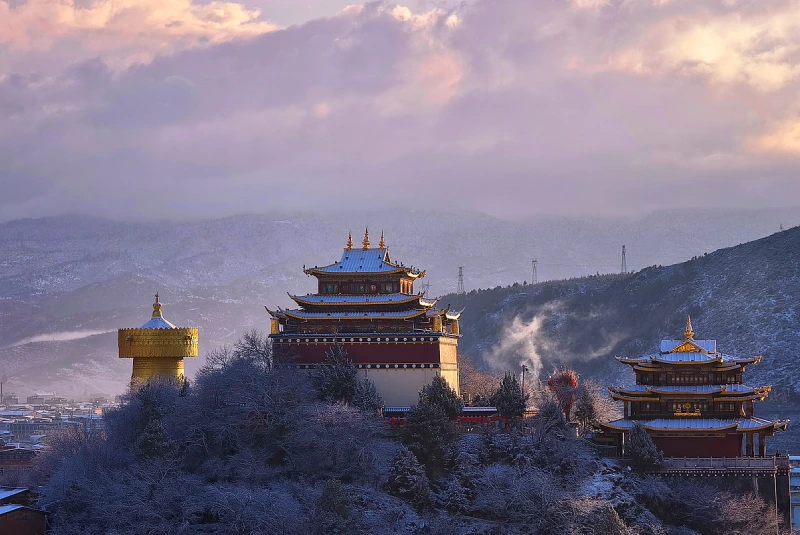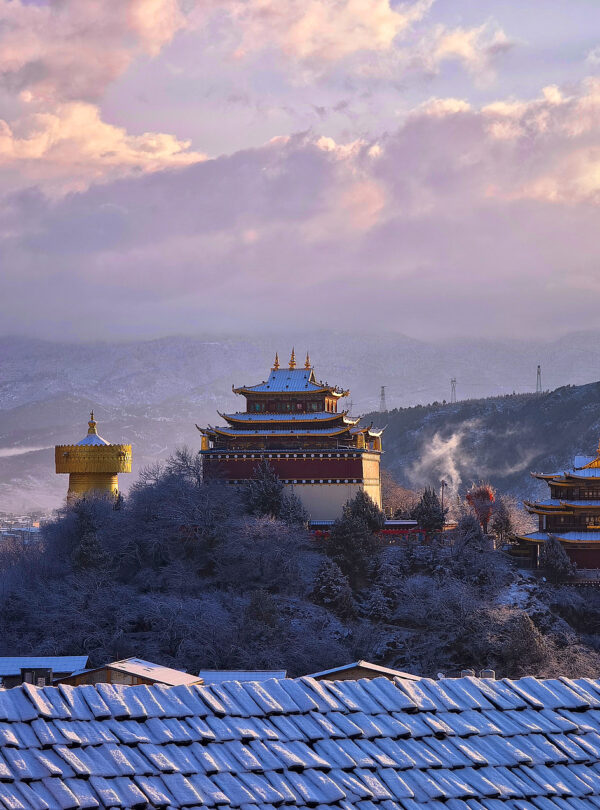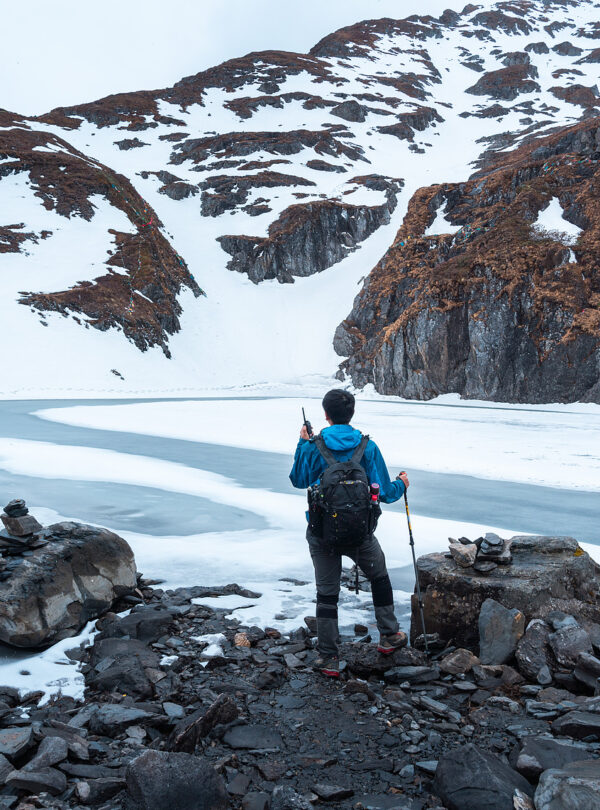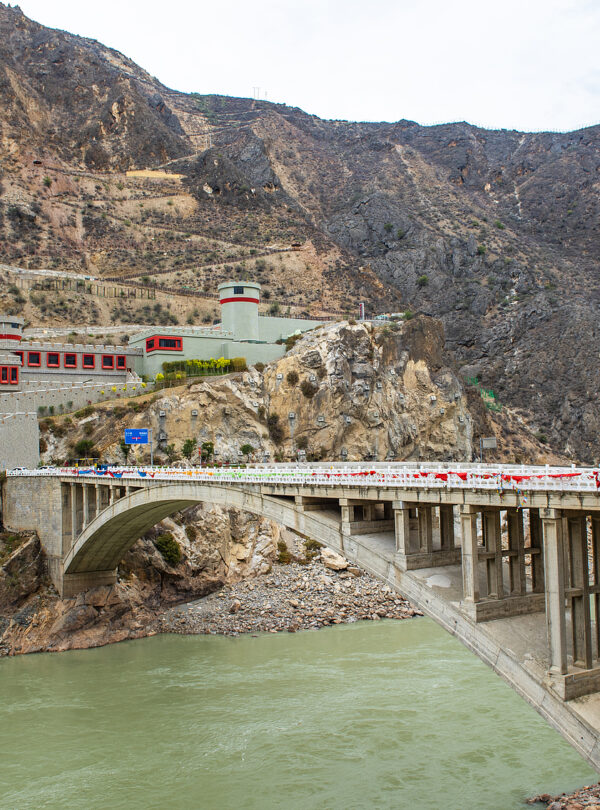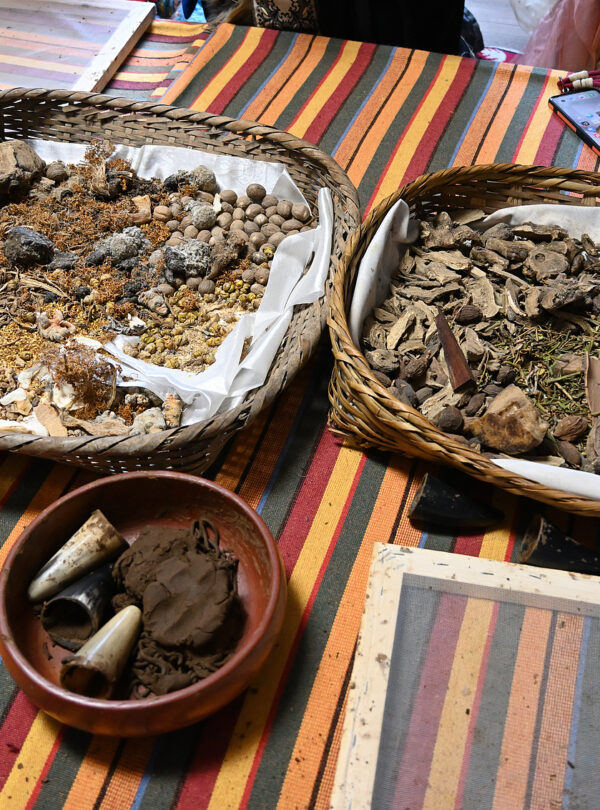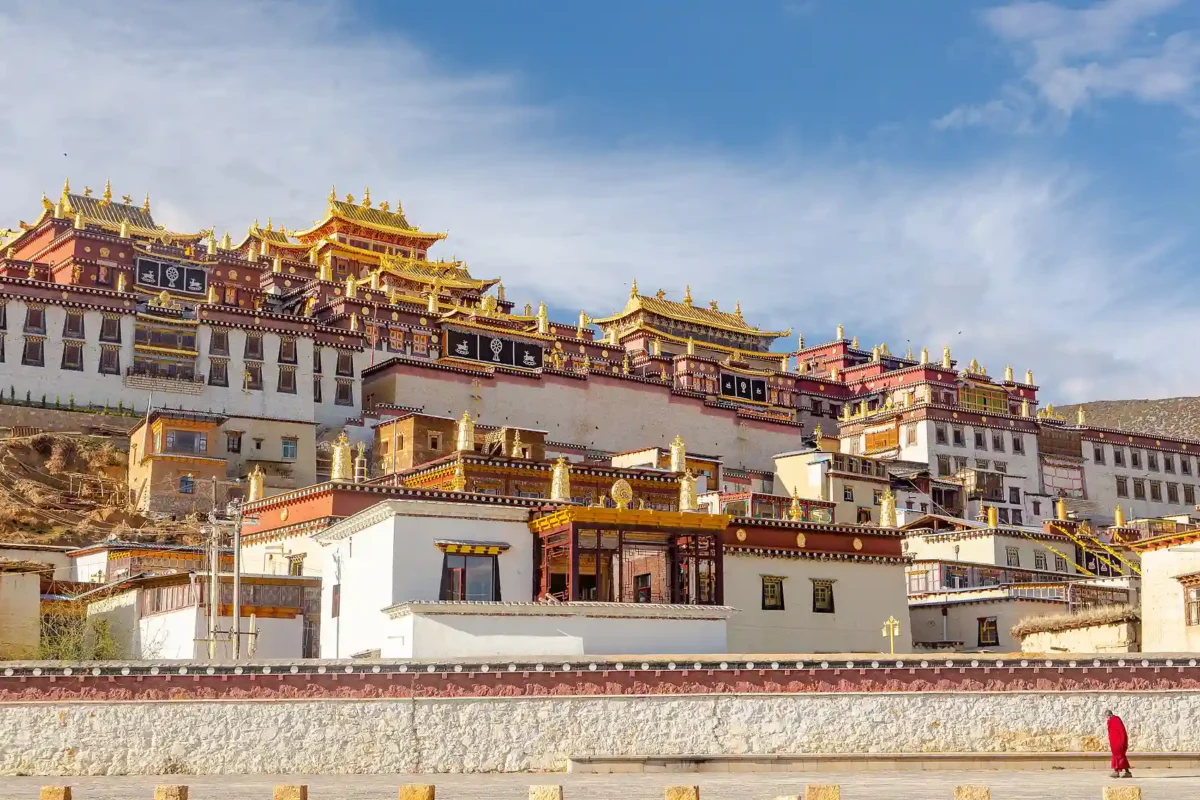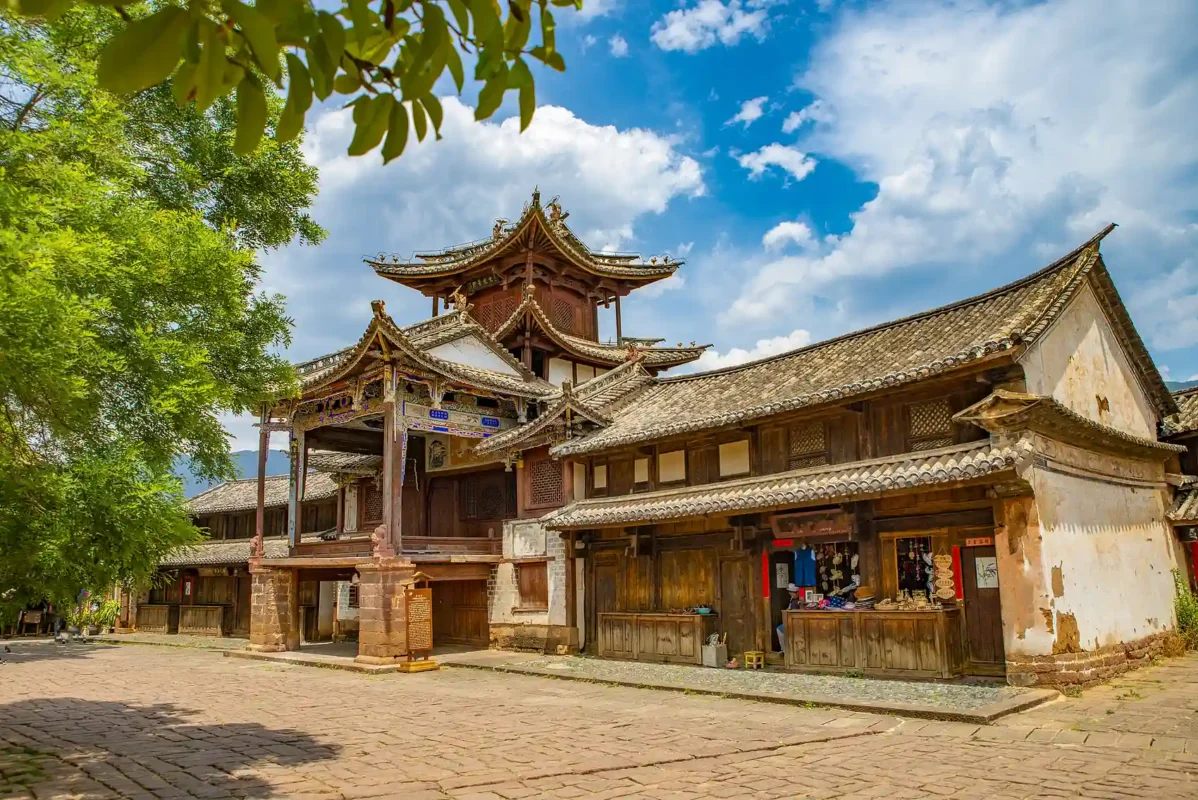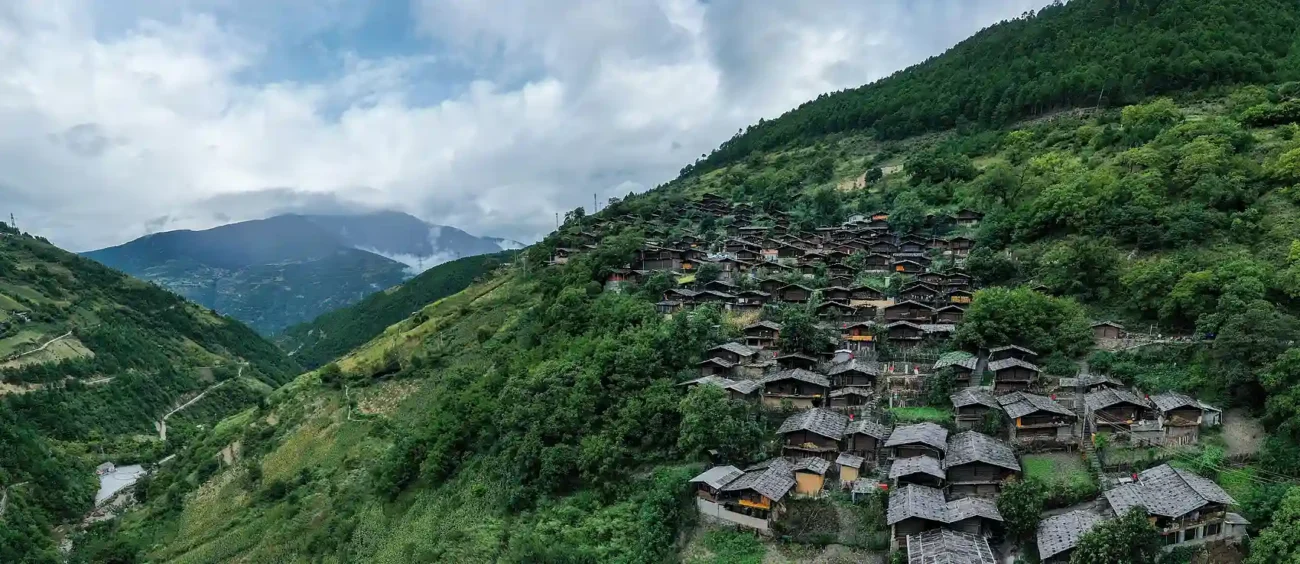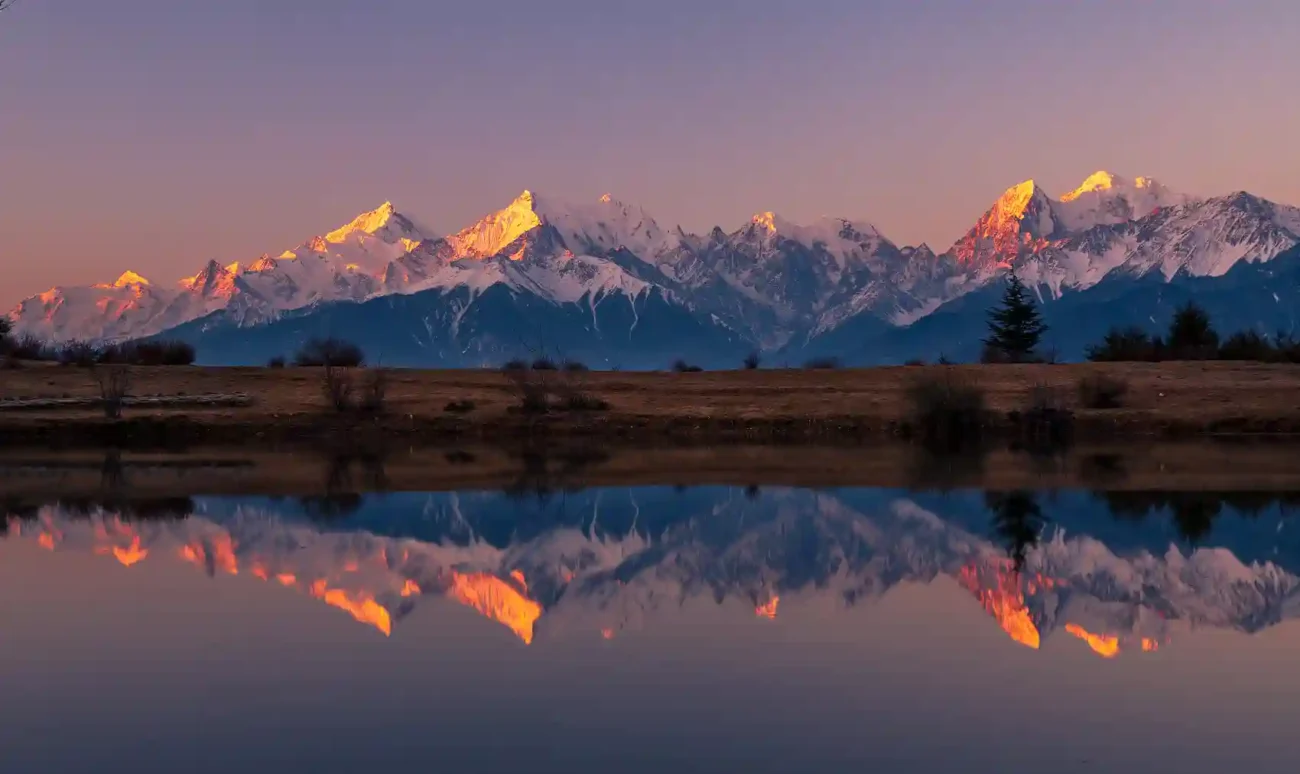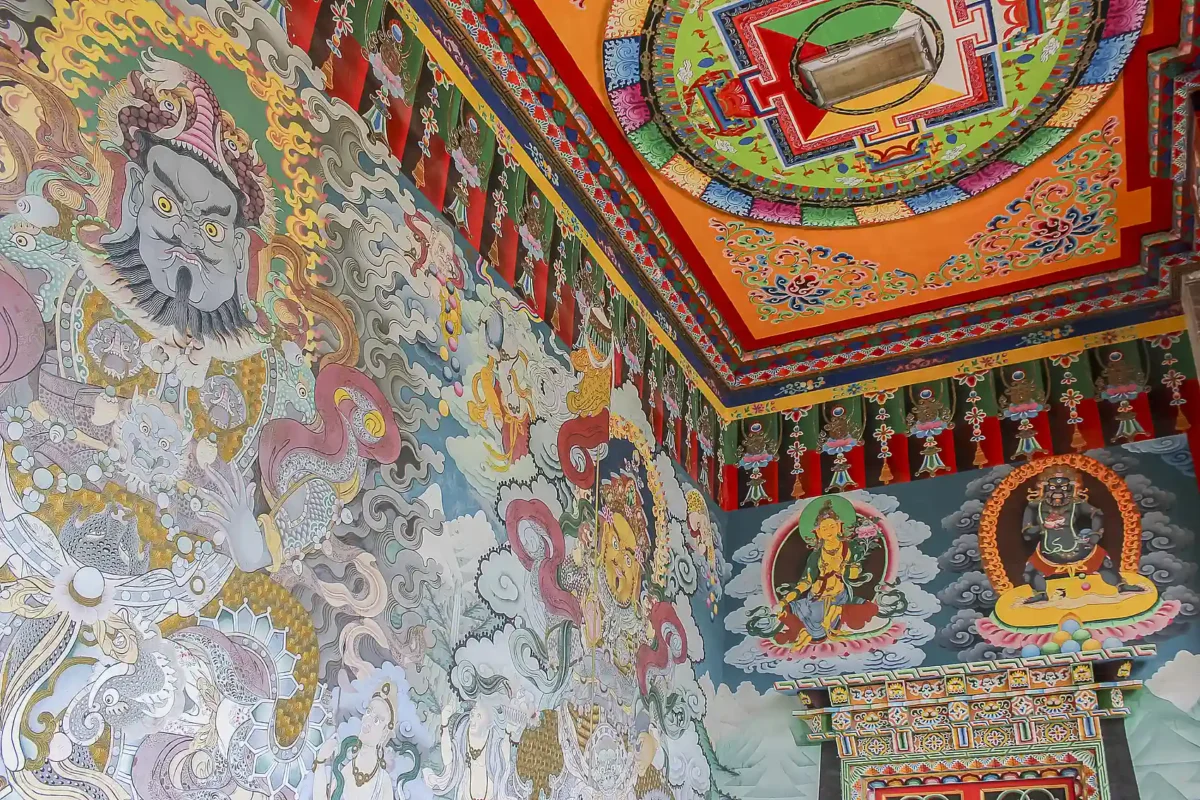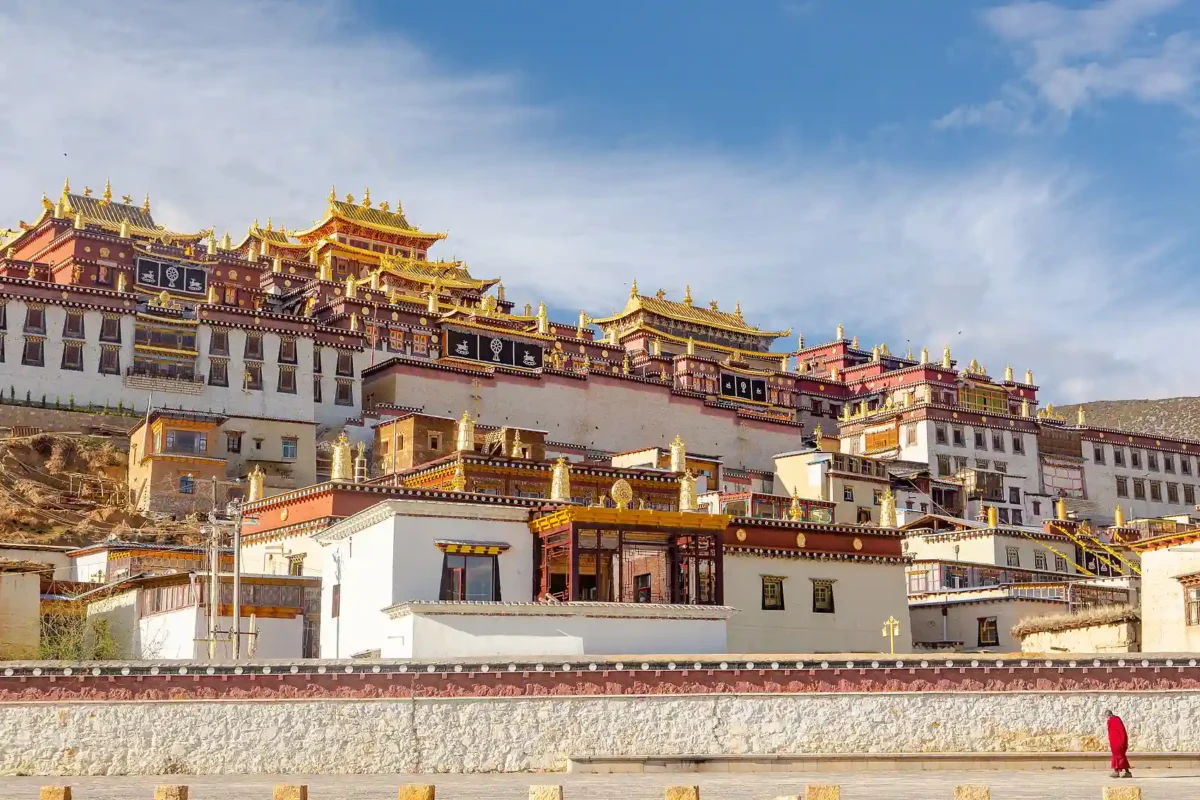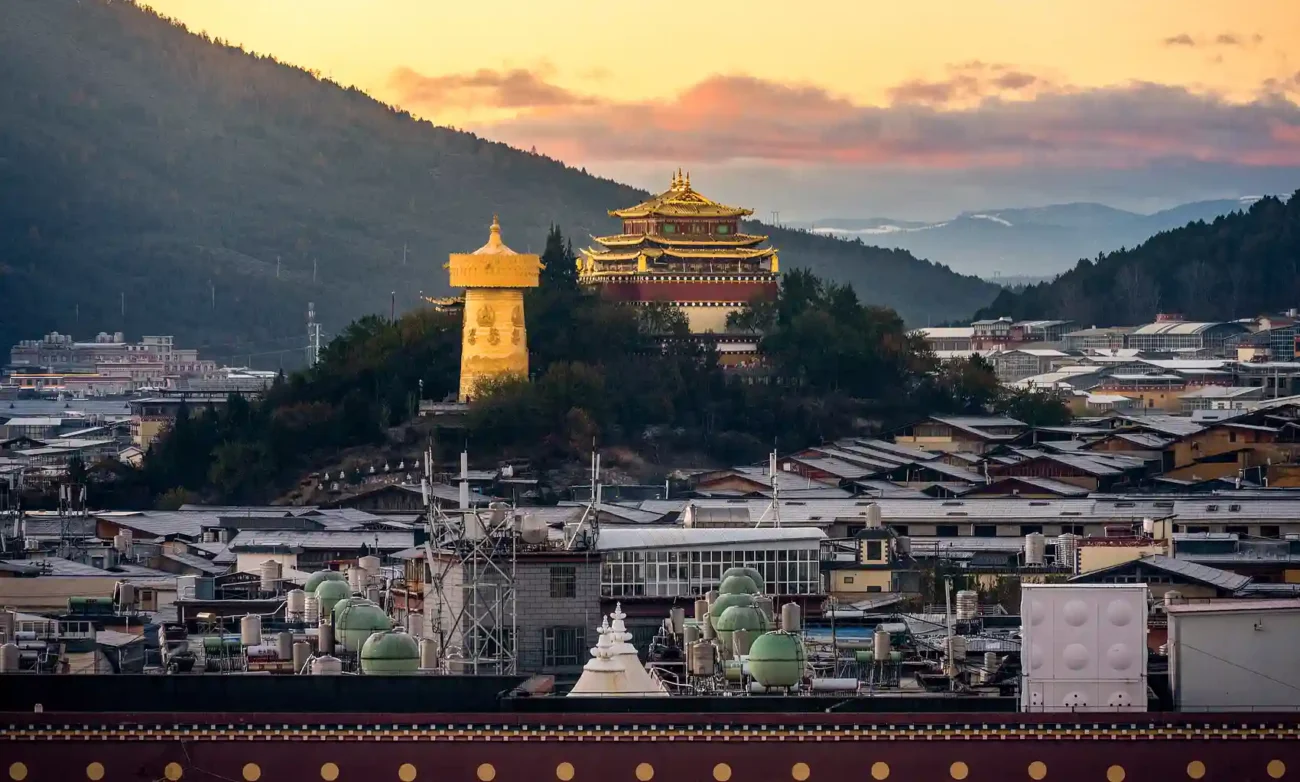Shangri-La | A Millennial Covenant Between Humanity and Divinity: Snow Mountain Pilgrimage (9 Days 8 Nights)
9 Days 8 Nights- Transportation: Private transportation with professional driver throughout the trip
- 8 nights 5-star hotel accommodation (or equivalent)
- Departure: Lijiang
- Arrival: Shangri-La
- Meals: Daily breakfast, lunch and dinner as mentioned in the itinerary
- Language: English Local guide
- Minimum age: 10
- Maximum age: 50
Overview
The Tibetan culture of Shangri-La (Diqing Tibetan Autonomous Prefecture, Yunnan) shares roots with Tibet’s traditions but has evolved into a unique blend of ecological harmony and multicultural integration through its geographical isolation, history, and ethnic exchanges. It stands as a “living museum” of Tibetan culture in the Hengduan Mountains.
Shangri-La’s Tibetan culture, like snowmelt from sacred peaks, retains the purity of its Tibetan origins while absorbing hybrid influences from the ancient Tea Horse Road.
Here, snow-capped mountains are not mere scenery but divine sanctuaries;
the hum of prayer wheels echoes faith unbroken since the 7th century.
Trace millennia-old carvings on mani stones with local Tibetans, touch the ancient covenant between humanity and sacred peaks in the smoke of incense rituals.
This is not about conquering landscapes but spiritual awakening:
When your palms share warmth with a spinning prayer wheel,
When butter lamps illuminate freshly inked Tibetan scriptures,
When starlight from Kawagarbo falls on a chanter’s wrinkles…
Tibetan culture, in its primal devotion, teaches modernity the meaning of “symbiosis.”
This is not just a journey—it’s a redefinition of life and faith. Walk the pilgrimage path, feel the texture of sacred texts, and you’ll understand: Shangri-La’s “heaven” lies not in myths but in Tibetans’ daily communion with the mountains.

Highlights
- Living Heritage: The world’s last intact Tibetan nature worship system.
- Timeless Traditions: Preserved religious rituals along the Tea Horse Road.
- Spiritual Totem: The Meili Snow Mountain’s guardian of community life.
Itinerary
Accommodation: Songtsam Lijiang Lodge — China’s premier Tibetan-style boutique hotel.
Songtsam, China’s most unparalleled hospitality brand, pioneered the concept of a "boutique lodge circuit" and remains the only hotel group that flawlessly integrates local natural landscapes, cultural heritage, and refined mountain retreat experiences.
For two decades, Songtsam has transformed from an obscure gem to a globally acclaimed legend, crafting ethereal sanctuaries beneath snow-capped peaks and redefining China’s most breathtaking vistas. Every detail—from site selection and architectural aesthetics to interior design—is a masterstroke of artistry.
Spanning the UNESCO World Heritage-listed "Three Parallel Rivers" region, the mythic National Highways 214 and 318, the ancient Tea Horse Road, and the "Third Pole" Tibetan Plateau, Songtsam has elevated Tibetan travel with unprecedented luxury and cultural immersion. Its lodges are not mere accommodations but living museums, where guests dwell within an ambiance so authentically Tibetan, it feels like stepping into a curated cultural tapestry.
Evening: We have arranged a pre-departure briefing session tonight. Please note the time and arrive promptly.
Note: The briefing will cover:High-altitude health precautions、Safety guidelines、Team introductions and emergency contact details、Overview of the itinerary。
Meals: Breakfast: On your own | Lunch: On your own | Dinner: Hotel dinner.
Breakfast: Hotel breakfast
Morning: [Guishan Park]
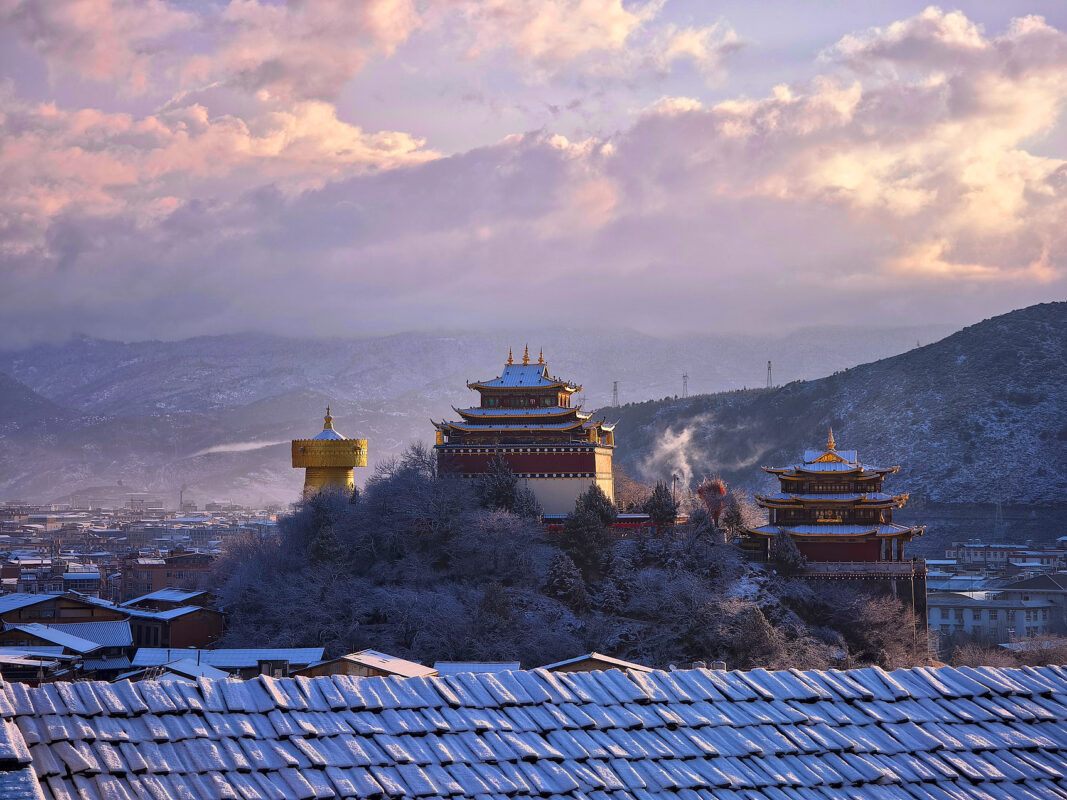
After breakfast, depart for Guishan Park in Shangri-La, enjoying scenic views along the way.
The park’s iconic landmark is the Giant Prayer Wheel, reputedly one of the largest in the world. Requiring at least seven people to rotate, each full turn is said to be equivalent to reciting Buddhist mantras 1.24 million times.
After breakfast, depart for Guishan Park in Shangri-La, enjoying scenic views along the way.
Every rotation becomes a meditative act—the chanted prayers seem to resonate through the mountains, amplifying the serenity with solemnity. The collaborative effort to spin the wheel is not only a gesture of respect for Buddhist rituals but also an immersive way to connect with Tibetan spirituality.
Here, gaze upward to endless snow-capped peaks or look down to panoramic views of Shangri-La City. The radiant sunlight, pristine blue skies, majestic temple gates, and the golden prayer wheel compose a sacred panorama, blending natural grandeur with spiritual devotion.
Lunch: Enjoy a traditional lunch in Dukezong Ancient Town, Shangri-La.
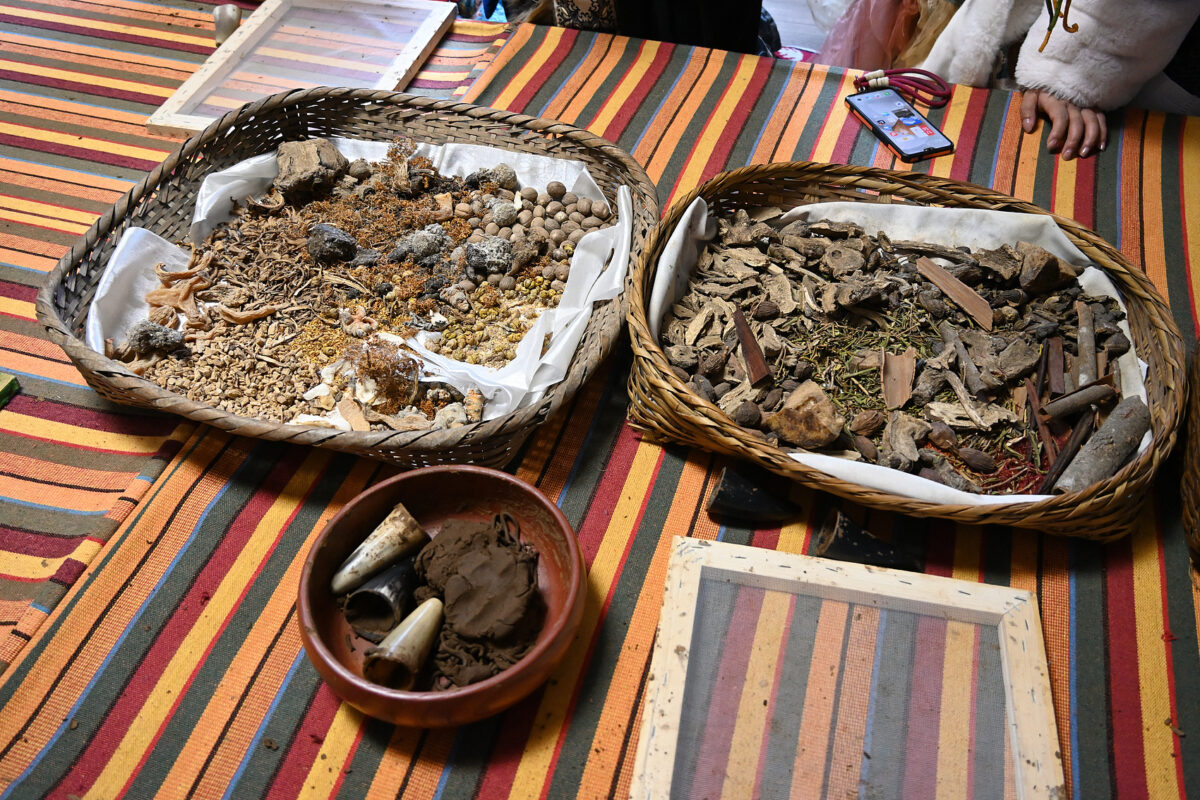
Afternoon: [Intangible Heritage Experience: Thangka & Tibetan Incense]
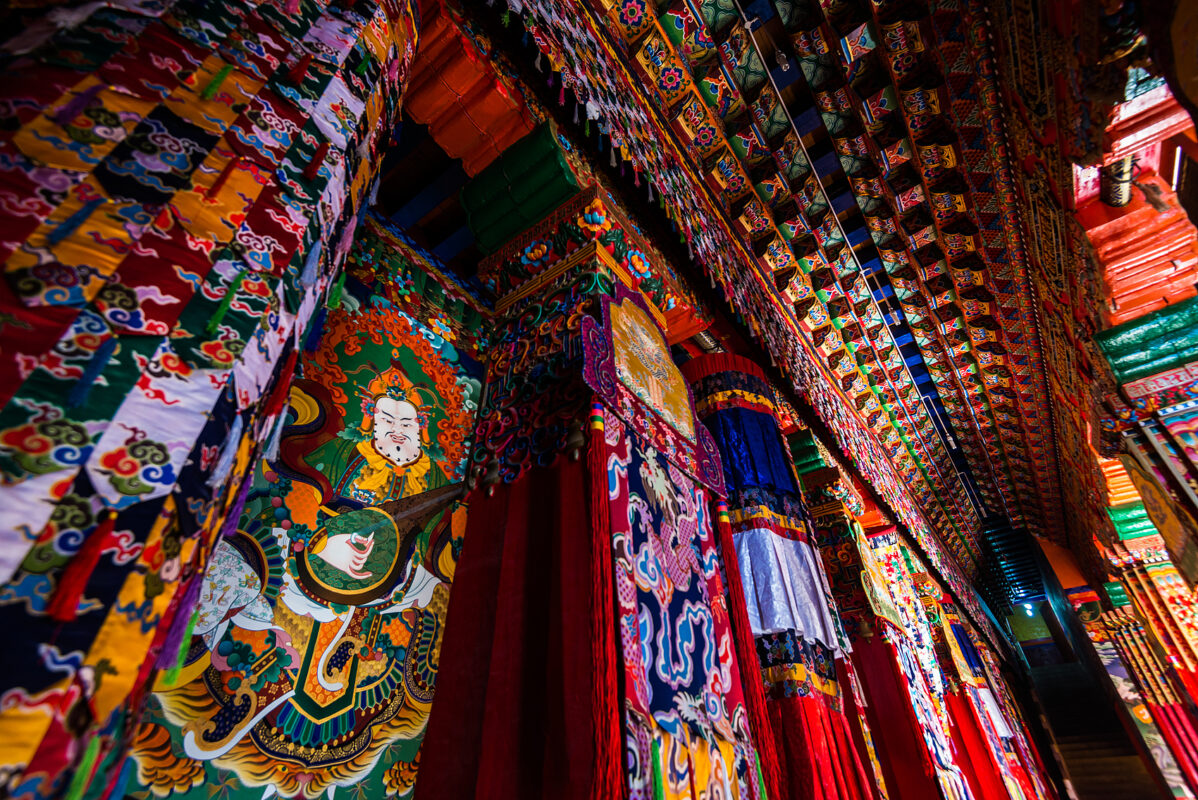
Visit the Intangible Cultural Heritage Center to delve into Tibetan culture through hands-on Thangka painting and incense crafting. Learn about Shangri-La’s history, traditional Tibetan home design, and the meticulous process of creating Tibetan incense.
Thangka, a sacred Tibetan art form, dates back to the 7th century under King Songtsen Gampo’s reign and was recognized as a National Intangible Cultural Heritage in 2006. These intricate scroll paintings, crafted with gold, silver, and natural mineral pigments on specially treated canvas, are celebrated for their spiritual depth and vibrant hues. Renowned as "art closest to the divine," Thangka embodies Tibet’s religious devotion and artistic mastery.
Beyond religious themes, Thangka art vividly portrays Tibetan history, culture, and daily life, blending bold ethnic motifs, rich spiritual symbolism, and a distinctive aesthetic style. Each stroke carries centuries of wisdom, transforming the canvas into a living chronicle of Himalayan civilization.
Evening: After today’s activities, check in at Songtsam Retreat Shangri-La. Following dinner, unwind with a spa treatment designed to melt away the day’s fatigue and enhance your evening tranquility.
Dinner: Indulge in a local-inspired Western cuisine paired with Ao Yun wine, Shangri-La’s iconic red blend. Revered as China’s first "cult wine," Ao Yun captivates connoisseurs with its "elegant and restrained style," "crisp acidity, full-bodied texture, silky tannins, and exceptional concentration." Hailed as a rising star in global viticulture, this complex and graceful wine is a testament to Shangri-La’s unique terroir—where Himalayan altitude meets ancient winemaking artistry.
Breakfast: Hotel breakfast
Morning: [Pilgrimage to Songzanlin Monastery & Tangdu Village, Nixi Township]
After breakfast, our first stop is a spiritual pilgrimage to Songzanlin Monastery.
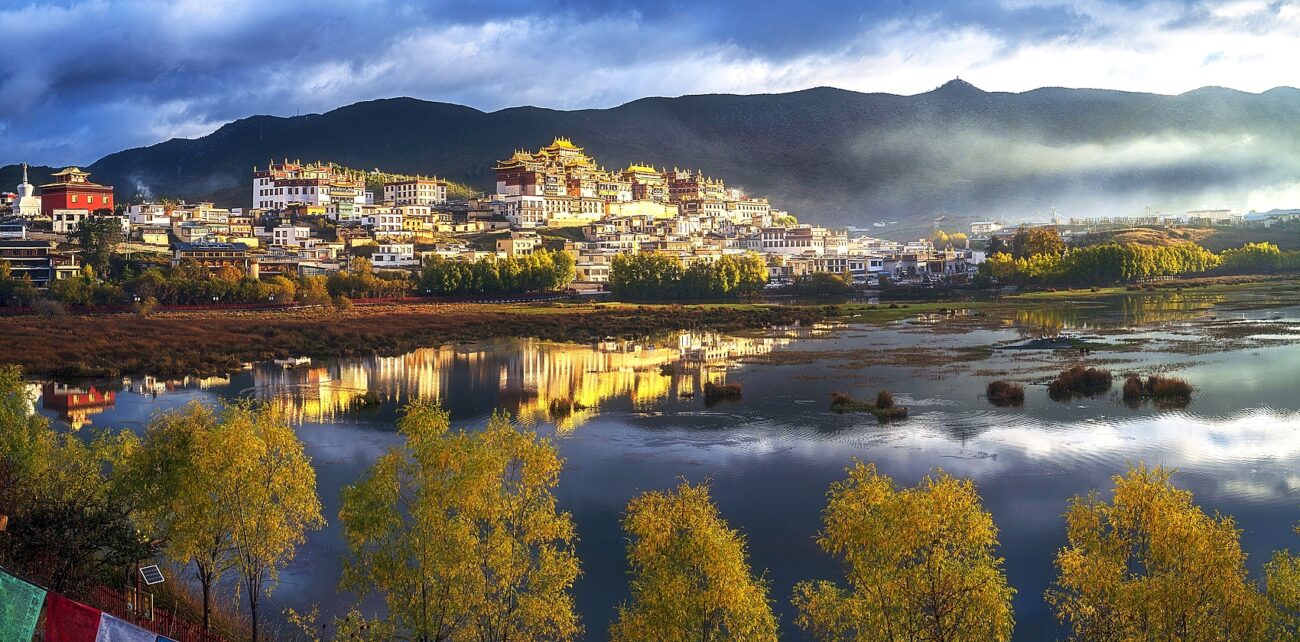
As the largest Tibetan Buddhist monastery in Yunnan Province and a major Gelugpa sect center in the Kham region, Songzanlin holds immense religious significance across Tibet. Often called the "Little Potala Palace," its fortress-like structure cascades down a mountainside, embodying the pinnacle of Tibetan architectural artistry. The monastery is also revered as a "Tibetan Art Museum" for its exquisite murals, sculptures, and sacred relics.
To deepen your understanding of Tibetan Buddhism, we’ve arranged an exclusive guided tour led by a monastic scholar from Songzanlin.
Next, journey to Tangdu Village in Nixi Township (northwest Shangri-La), where an ancient craft—Tibetan Black Pottery—has been preserved as a National Intangible Cultural Heritage.

Nixi, a Tibetan village along the historic Tea Horse Road, has been the cradle of black pottery for over 1,000 years. Here, humble Tibetan artisans continue to forge the "song of earth and fire," using techniques passed down since their ancestors crafted ritual vessels and daily utensils. As the Tea Horse Road thrived, these lustrous black treasures crossed mountains on caravans, spreading Tibetan culture worldwide.
In this mystical land, the wisdom and creativity of generations endure, weaving a unique cultural legacy from fire, earth, and faith.
At a century-old workshop in Tangdu, meet a master potter who will unveil the secrets of Nixi pottery: from clay preparation and hand-molding to open-fire kiln rituals. Participate in a hands-on pottery session, shaping raw clay into timeless artifacts, and glimpse the ancient rhythms of Tibetan life.
Lunch: Specialty Free-Range Chicken Soup
Afternoon: [Red Army Heritage Tour]
Journey to Waka Town this afternoon to relive the heroic chapter of the Red Army’s Long March. Stand by Helong Bridge and along the Jinsha River, where curated storytelling brings to life the fervent history of revolutionary struggles. Feel the winds of nearly a century ago—a tangible connection to the courage and sacrifice that shaped modern China.
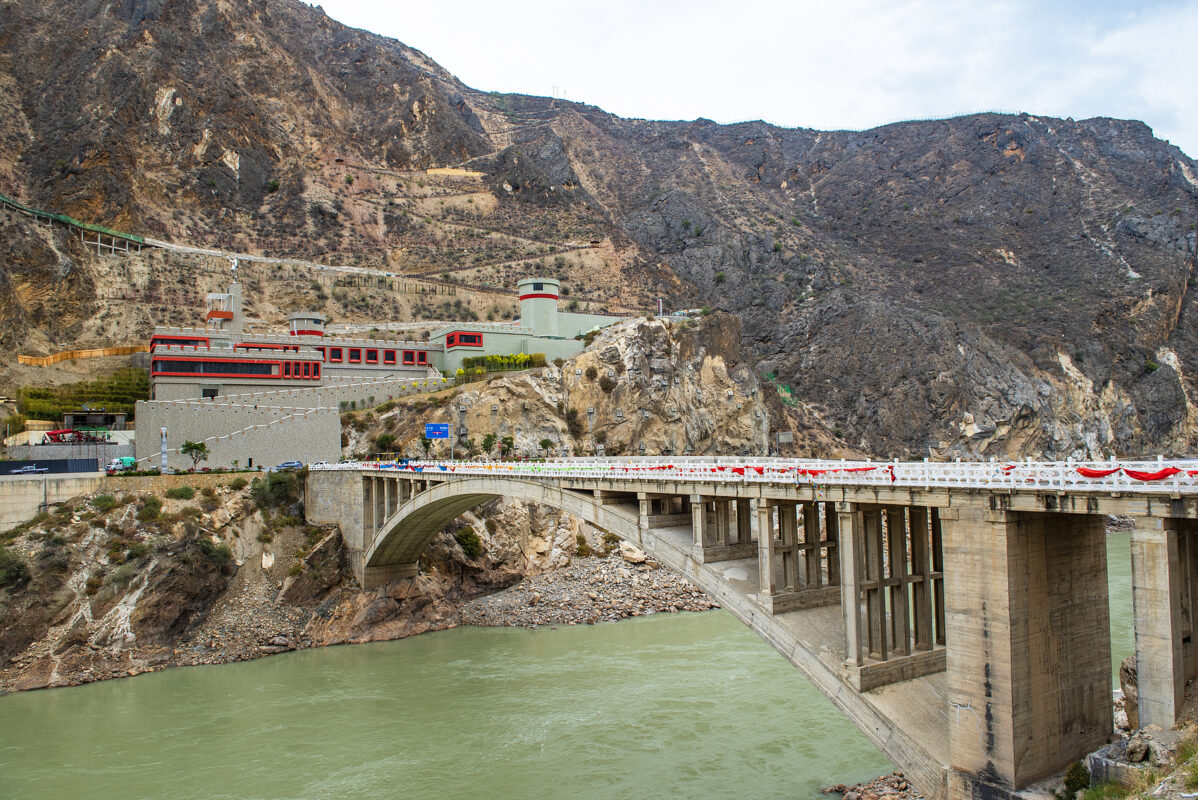
The iron-chain bridge in Qiaotou Village, Nixi Township, Shangri-La, bears a solemn couplet etched into its structure:
"The heroic deeds of martyrs shine through millennia; the thriving era inspires millions to forge ahead."
Steeped in the gripping history of the Red Army’s Long March, this bridge—affectionately called "Hongjun Bridge" (Red Army Bridge) by locals—has become a household name. It stands as a vivid testament to the Red Army’s passage through Garze, now emerging as a must-visit heritage landmark in Sichuan’s Garze Tibetan Autonomous Prefecture.
Evening: After concluding the itinerary, check into Bodu Hotel at the foot of Meili Snow Mountain.
Podu Hotel embraces sublime naturalism and local culture, crafting a harmonious connection between people and the world through exceptional value experiences. It stands as a convergence of nature and humanity.
The architecture blends seamlessly into the mountainous landscape. The guestroom design achieves an ingenious synergy between the exterior scenery and interior experience, ensuring every room faces the snow-capped mountains. Angled relative to the building facade, each space features a triangular outdoor area that enhances immersion in the surroundings.
Public spaces channel natural light through vertical circulation, unfolding from the sunken reception area upward to the restaurant, teahouse, and infinity pool. Each zone aligns with varying scenic vantage points, creating visual dialogues with the snow peaks, cliffs, and valleys.
Here, you’ll discover tranquil spaces of belonging amid life’s hustle and reconnect with your most authentic self in nature.
Dinner: Indulge in the hotel's signature cocktail reception, savor live performances by featured singers as melodic notes flow gently, and delight in bespoke cocktail creations crafted by our master mixologists. Unwind and rejuvenate from the day's fatigue in this serene ambiance.
Morning: 【Sunlit Golden Mountain of Meili Snow Mountain】Awaiting the miraculous spectacle of "Sunlit Golden Mountain" at the hotel. As the morning light ascends, the moment when the main peak Kawagarbo of Meili Snow Mountain is gilded with golden rays becomes breathtaking, revealing the harmonious blend of spirituality and nature.
Meili Snow Mountain is hailed by "China National Geography" as "China's Most Beautiful Snow Mountain" and revered by Tibetan people as the foremost sacred peak. Its renowned "Sunlit Golden Summit" presents a rare and magnificent spectacle. When golden rays descend from the heavens to illuminate the mountaintop, it resembles a glowing "Potala Palace," creating an awe-inspiring vista.
In ancient China, the Sunlit Golden Summit symbolized enlightenment, hope, and auspiciousness. In modern times, this natural phenomenon retains profound significance, commonly regarded as an emblem of good fortune and happiness. In some ethnic minority regions, the Sunlit Golden Summit carries religious and cultural importance. For instance, in Diqing Tibetan Autonomous Prefecture of Yunnan Province, it is considered one of Tibetan Buddhism's sacred sites.
This landmark serves not merely as a tourist destination but stands as a cultural icon of the Chinese nation. Its spiritual essence elevates the Sunlit Golden Summit to a revered sanctuary in people's hearts. Local inhabitants believe that through pilgrimage and prayer here, they may receive divine blessings and spiritual empowerment.
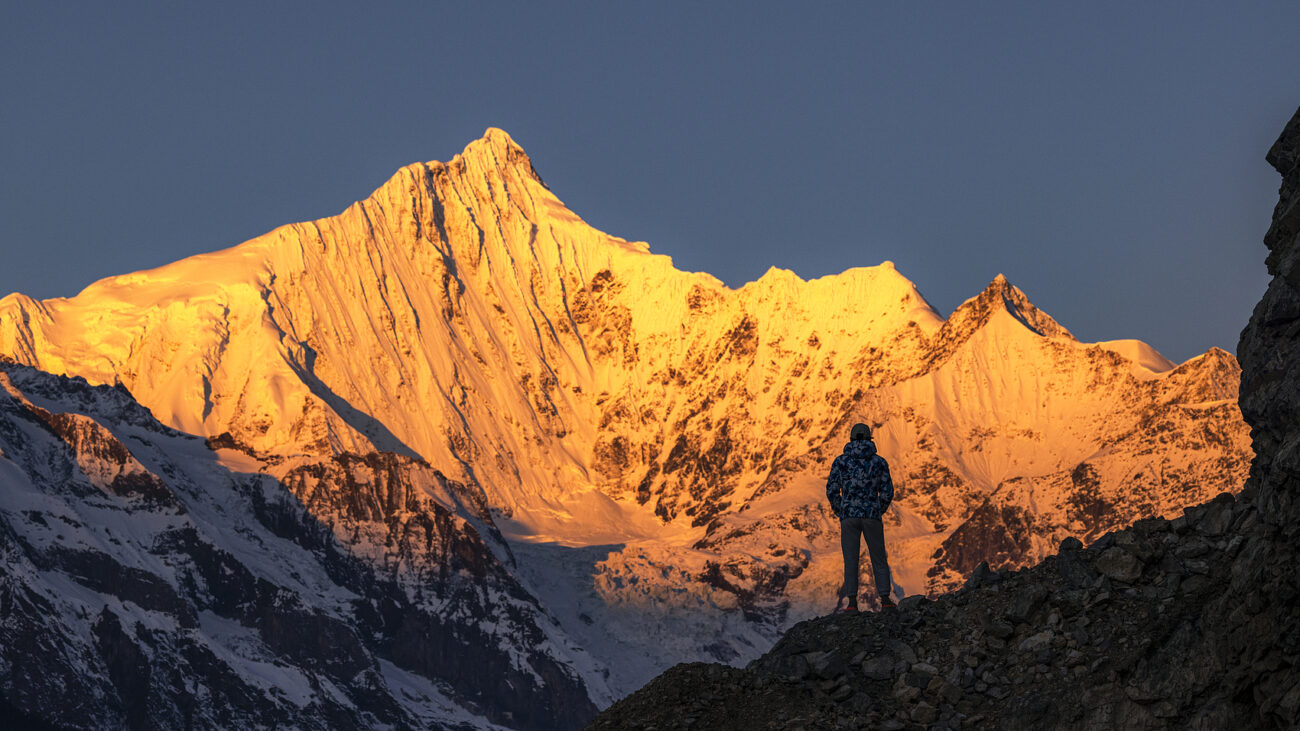
Breakfast: After admiring the sunrise glow on the Golden Mountain, enjoy a tranquil breakfast at the hotel.
Morning: [Yubeng Village Hike]
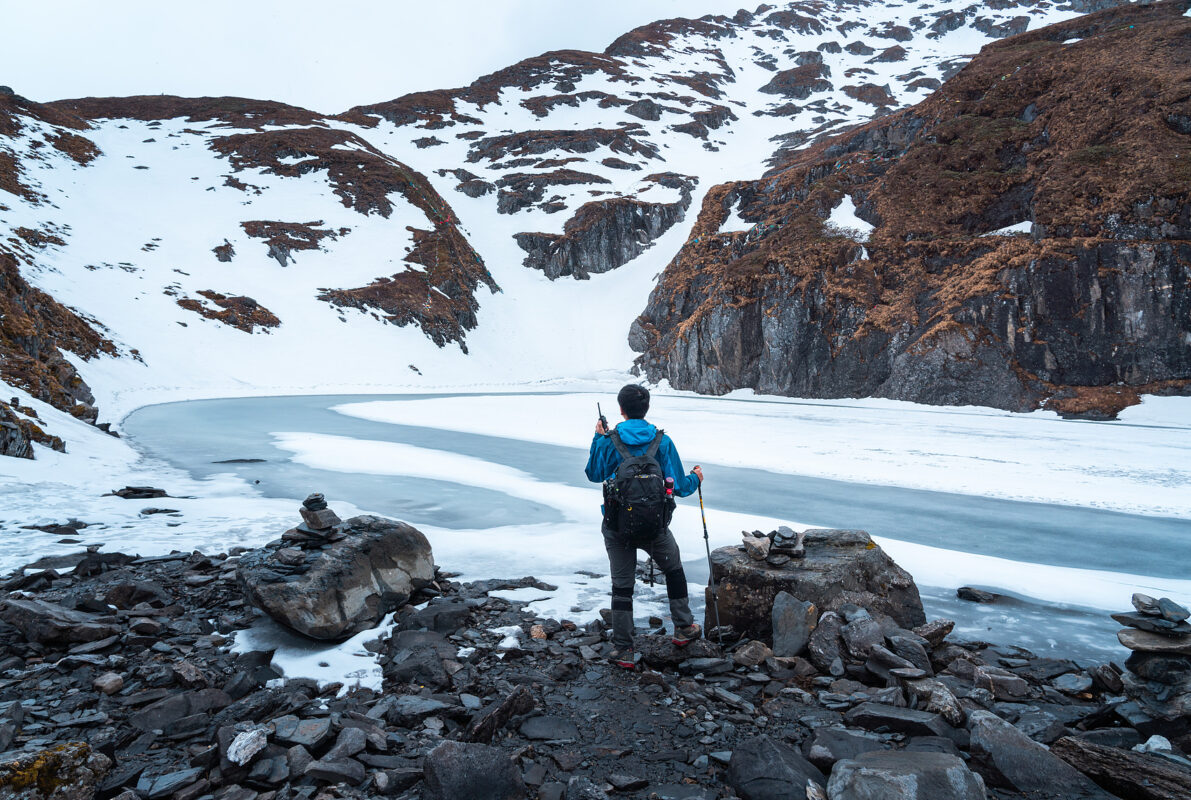
The Yubeng hiking route is an epic trail in China, hailed as "the last paradise on Earth," "a hidden utopia at the foot of Meili Snow Mountain," "a sacred land beneath divine peaks and holy waters," and "a heaven for hikers."
To enter Yubeng, the "village beneath sacred peaks," hikers must cross the Nazongla Pass at an elevation of 3,900 meters. The village preserves traditional Tibetan lifestyles. Follow forest trails adorned with prayer flags and encounter prostrating pilgrims along the way. Stand beneath the Sacred Waterfall to receive a blessing from its holy waters, listening to Tibetan guides recount legends of Guru Rinpoche. Stay overnight in a Tibetan-style wooden lodge, sipping butter tea by the fireplace as stars blanket the slopes of Mount Kawagarbo.
Here, time is measured by the rhythm of sutra chants and the cycle of seasons.
Lunch: A hiking supply pack will be provided during the journey.
Evening: After the hike, check into the Wild Language Hotel in Yubeng.
Nestled at the foot of the "world’s most beautiful snow-capped mountain"—Meili Snow Mountain—in Lower Yubeng Village, Wild Language Hotel is just minutes away from the pristine forests leading to the Sacred Waterfall. It is the closest wilderness-view hotel to Meili Snow Mountain. To showcase Yubeng’s breathtaking beauty, the hotel lobby features 14-meter-wide panoramic floor-to-ceiling windows, offering unobstructed views of meadows, forests, and snow-capped peaks. Every guestroom is designed with full-view windows facing the Goddess Peak and Five Crown Peaks of Meili Snow Mountain. On clear days, you can witness the "sunlight turning the peaks golden" right from your bed.
Dinner: Dine at the hotel and gather around the fireplace for evening conversations exploring the culture of Tibetan Buddhism.
Breakfast: Hotel breakfast
Morning: Sacred Waterfall Hike

After breakfast, embark on a 5-hour round-trip hike to the Sacred Waterfall.
The Sacred Waterfall Trail (referring to the Meili Snow Mountain Yubeng pilgrimage route) is not merely an outdoor adventure but a centuries-old pilgrimage path steeped in Tibetan Buddhist faith, embodying the Tibetan philosophy of "nature as divinity."
The Sacred Waterfall is revered in Tibetan Buddhism as a meditation site of Guru Padmasambhava (Lotus-Born Master). Legend holds that its cascading waters originate from the nectar of Khawa Karpo (Kawagarbo), the sacred mountain deity, believed to cleanse karmic impurities. Pilgrims trek to the waterfall, circumambulate it clockwise (a ritual called "turning the waterfall"), and allow the holy waters to drench them, completing a spiritual dialogue with the sacred mountain—a practice sustained for over a millennium.
While urban hikers conquer altitude with trekking poles, Tibetan pilgrims measure faith with full-body prostrations, their foreheads kissing the earth. The trail’s Mani stone piles, fluttering prayer flags, and glacial streams are all encrypted symbols of Tibetan culture’s reverence for nature: from waterfall baptisms and tree spirit guardianship to smoke offerings (sang) for blessings, each step renews an ancient spiritual covenant between humans and the sacred mountains.
Here, physical exertion becomes a ladder to purify the soul, and silence resonates as the deepest form of prayer. Through bodily austerity, Tibetan pilgrims attune their spirits to the starlit rhythm of Khawa Karpo.
Lunch: Meals at own expense
Evening: Return to the hotel after the hike.
Dinner: Meals at own expense
Cizhong: A Century-Old Dialogue Between Tibetan Culture and French Romance
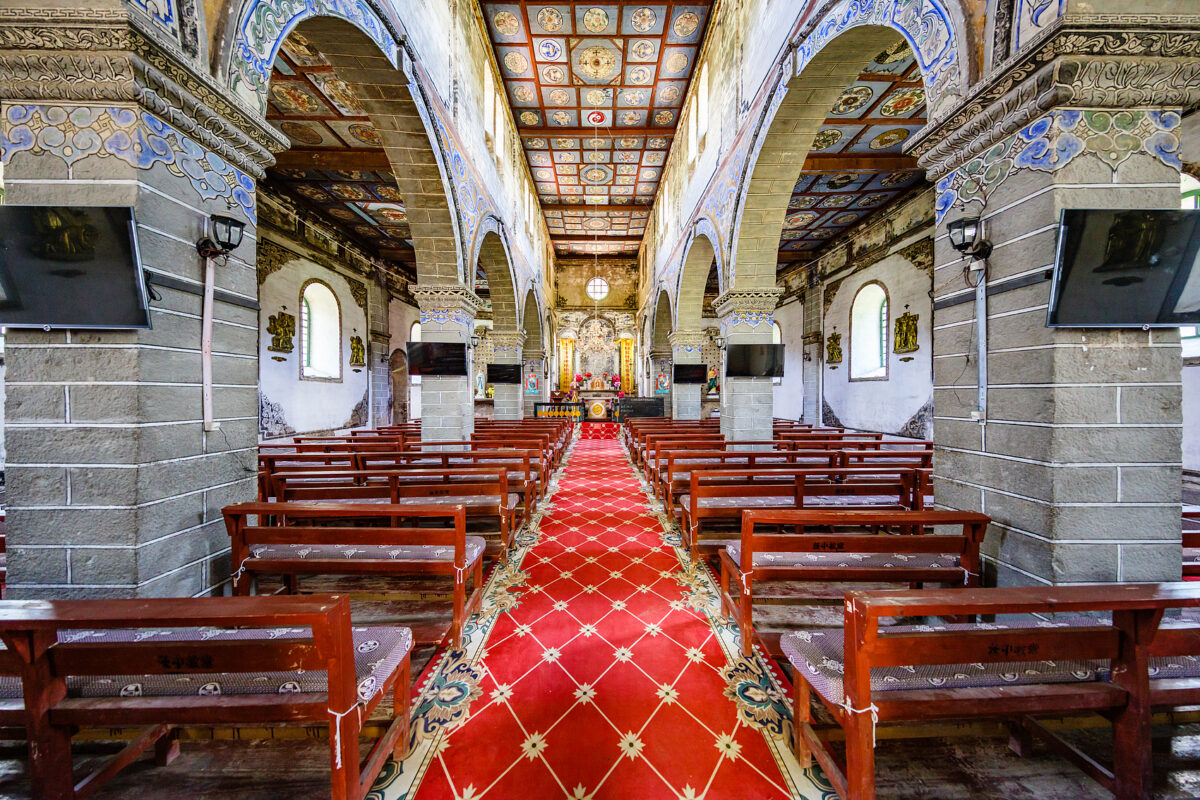
Located on the banks of the Lancang River, Cizhong Village blends Tibetan watchtowers with vineyards surrounding a century-old Catholic church. Here, we learn Thangka painting from Tibetan artisans, interpreting Buddhist cosmology through layered mineral pigments. Taste barrel-aged wine from traditional Tibetan wooden vats, and listen to elders chant Biblical hymns in Tibetan—where cultural coexistence becomes tangible warmth.
Breakfast: Hotel breakfast
Morning: Hike out of Yubeng, depart for Cizhong, enjoying scenic views en route.
Afternoon: Check in at Songtsam Hotel.
Dinner: Songtsam dinner
Breakfast: Hotel breakfast
Morning: [Nanjiluo Hiking]
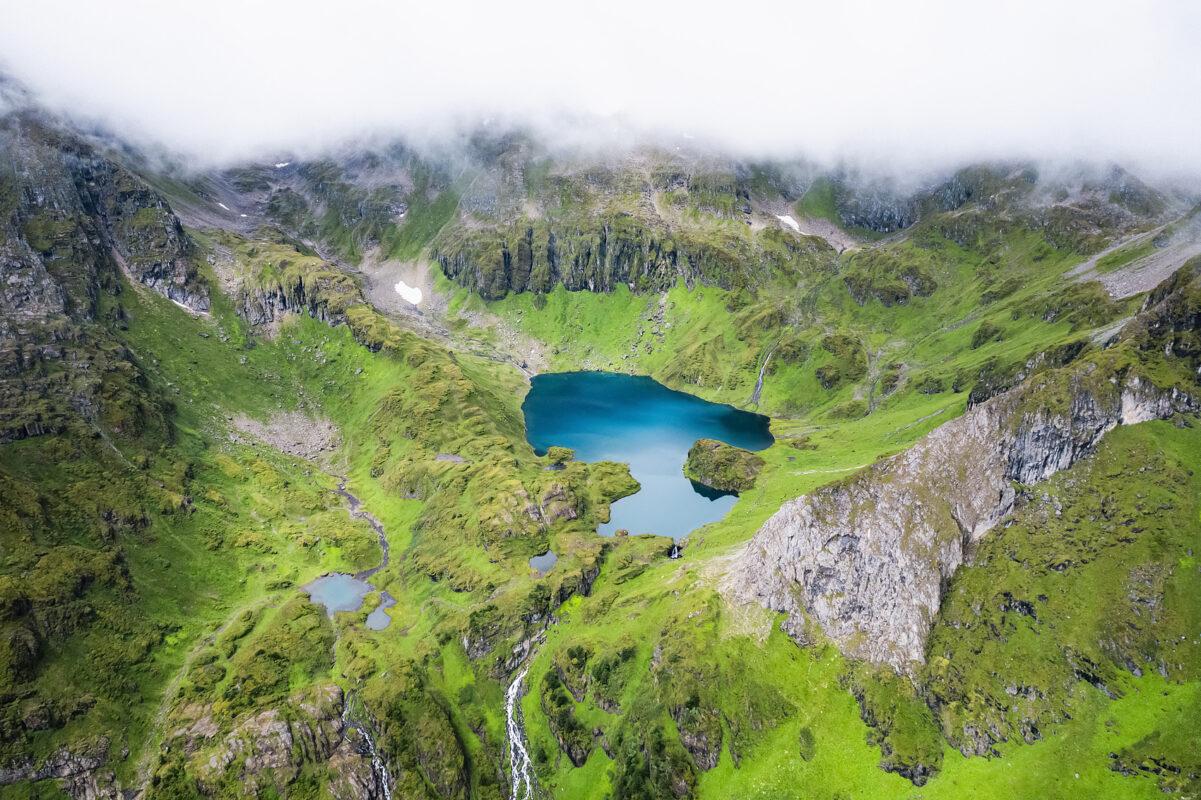
Nanjiluo, hailed as "God’s Forgotten Tear," hides seven interconnected glacial lakes and ancient Tibetan ecological reverence. Circle the lakes, watch herders toss barley into the water and call to mountain deities. Add a white stone to lakeside Mani piles, sensing Tibetan animistic devotion.
Classic Route: Start at Lake 3, traverse Yin Lake, Yang Lake, Island Lake, and more. Local guides lead through primeval forests and meadows, unveiling untamed wilderness.
Evening: Return to hotel after the hike.
Dinner: At your own arrangement
Breakfast: Hotel breakfast
Morning: [Tongle Ethnic Village]

Tongle Village, the most representative and ancient Lisu ethnic settlement in Weixi County, is acclaimed as the "oldest living fossil of the modern era". Situated along the historic Tea-Horse Road that ascends against the Lancang River from Yunnan to Tibet, it lies at the heart of the "Three Parallel Rivers" (Jinsha, Lancang, and Nujiang rivers) region. The torrential river carves through gorges, nurturing age-old Lisu communities along its banks. This area preserves pristine ecosystems, unspoiled natural landscapes, and enduring cultural traditions. The village boasts northwestern Yunnan's sole Catholic church – Cizhong Church, renowned for its harmonious fusion of Chinese and Western architectural elements.
Lunch: At your own arrangement
Afternoon: [Shaxi Ancient Town]
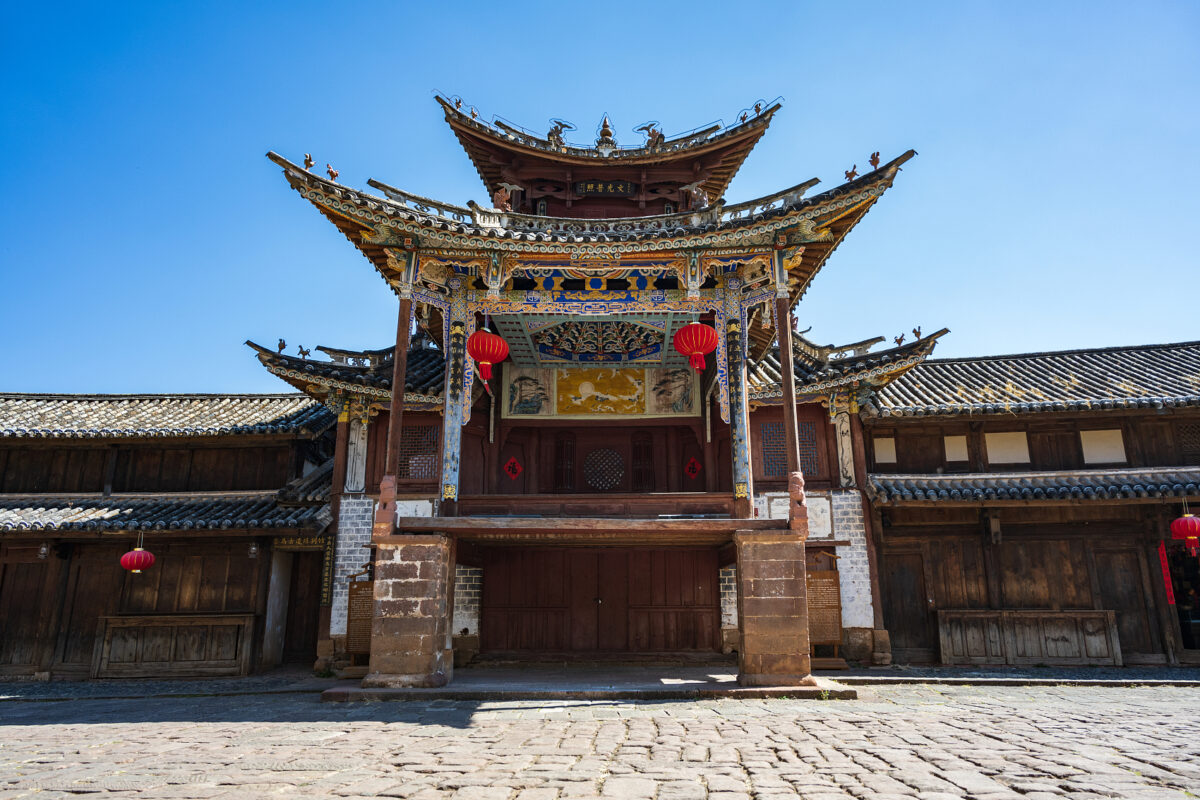
Tucked away in the mountains, Shaxi Ancient Town stands as the sole surviving millennium-old settlement along the ancient Tea Horse Road. It has been successively honored with titles including "Yunnan Provincial Historic and Cultural Town," "National Historic and Cultural Town," and "Yunnan Tourism Town." The Sideng Street of Shaxi, the only surviving marketplace along the Tea Horse Road, evolved into a quadrilateral trading district centered around Xingjiao Temple and the Kuige Pavilion with its stage during the Ming Dynasty, following the commercial prosperity of Shaxi's Tea Horse Road economy. This formed a characteristic trading settlement featuring front shops and rear warehouses architecture.
Once a crucial post on the Tea Horse Road, Shaxi Ancient Town gradually faded from public memory after the decline of this historic trade route. Yet this obscurity preserved the town's authentic charm perfectly. The bluestone-paved paths, white-walled and black-tiled houses, and lingering echoes of hooves all combine to narrate its ancient stories through every element of this timeless setting.
Evening: After the itinerary concludes, check in at the InterContinental Lijiang.
Dinner: At guests' own arrangement
After breakfast, transfer to Lijiang Airport per flight schedule. Conclude your journey and return home.
Includes/Excludes
Cost Includes
- Accommodation: 8 nights in a local 4-star and above hotel (or equivalent).
- Meals: Daily breakfast, lunch and dinner as mentioned in the itinerary.
- Traditional Tibetan meals and local delicacies during the tour.
- Transportation: Private transportation with a professional driver throughout the tour.
- Airport pickup in Lijiang and all necessary transportation arrangements are included.
- Guide: English-speaking local guide with extensive knowledge of Tibetan culture, history and Buddhism.
- Attraction tickets: Entrance fees to all attractions mentioned in the itinerary.
- Activities: Participate in a Tibetan handicraft workshop (Thangka painting or incense making). Visit a local Tibetan village.
- Local taxes: All local taxes and fees applicable to accommodation, meals and activities.
Cost Excludes
- International flights and visa costs.
- Personal expenses.
- Travel insurance.
- Anything not included in the itinerary.
-
Shangri-La, Yunnan
-
Lijiang, Yunnan
-
English-speaking Guide
-
Bus
Related trips you might interested in
Hong Kong Huafang Culture & Technology Co., Ltd.
A Deep Travel Guide to Help the World Perceive China, Embarking on a Cultural Exploration Journey.


